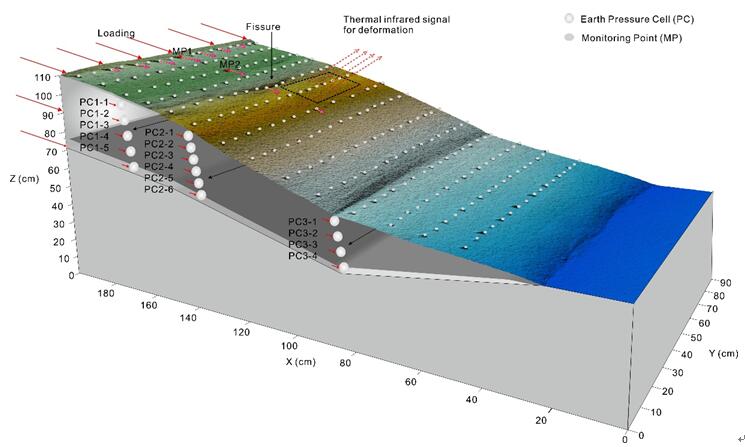Junwei Ma,Huiming Tang, Xinli Hu, Antonio Bobet, Rui Yong, Mutasim A. M. EzEldin. Model Testing of the Spatial-temporal Evolution of A Landslide Failure. Bulletin of Engineering Geology and the Environment[J]. 2016: 1-17. doi: 10.1007/s10064-016-0884-4 (SCI) Abstract: This paper outlines the spatial–temporal evolution of a landslide. A multiple monitoring system that consists of a three-dimensional (3D) laser scanner, a particle image velocimeter (PIV), earth pressure cells (PCs), and a thermal infrared (TIR) imager were designed and employed for a 1 g landslide model case study. The displacement, velocity, lateral earth pressure and surface temperature were recorded during the evolution of a landslide. Four stages of evolution were identified using the measured displacements: the initial stage, the uniform stage, the accelerated stage and the failure stage. The deformation, lateral earth pressure and surface temperature of a landslide were monitored during each stage. The distribution of the lateral force with depth varied significantly during movement, and the depth of the maximum soil pressure increased with movement. The surface temperature of the moving mass was significantly higher than the surface temperature of the nonmoving mass. The average change in surface temperature showed a significant increase in surface temperature followed by a decrease in surface temperature prior to failure. This study provides procedures and solutions for landslide monitoring, interpreting landslide initiation and detecting landslides.
 |

